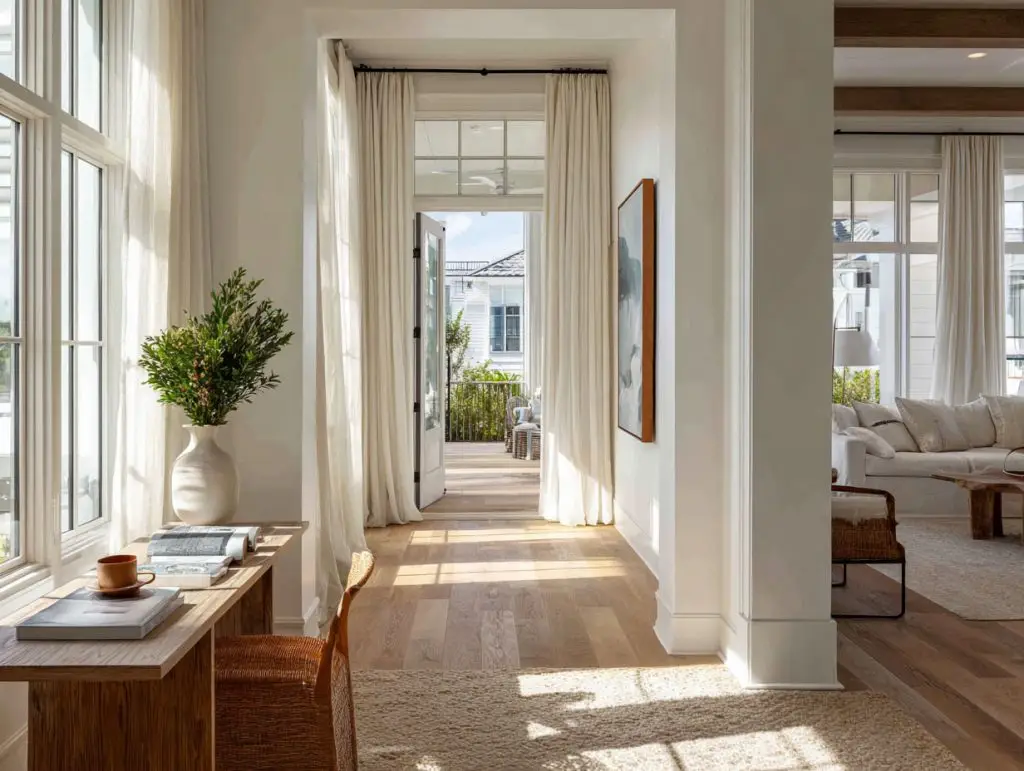
When Every Room Was Perfect — But the House Still Felt Tired
The Routine That Looked Like Order
My Saturdays in Destin used to follow a script.
Bedroom first — bedsheets, windows, fresh air.
Then the kitchen — countertops shining, floor mopped, lemon scent everywhere.
Living room last — fluff the pillows, align the magazines, light a candle.
By sunset, every room looked like it belonged in a catalog.
And yet, the house didn’t feel clean.
It felt… disconnected.
There was no sense of flow, no freshness moving through the space — just still air and surfaces that looked good separately but somehow didn’t work together.
That evening, I sat down on the couch and realized something strange: I had cleaned rooms, not a home.
The Invisible Divide
Destin homes have this unique duality — they live both inside and outside.
You bring the ocean in with you every day: a breeze through open doors, salt dust on the windows, humidity sneaking into fabrics.
And when you clean one space at a time, you break that natural connection.
You isolate air, movement, and rhythm.
I’d been trying to perfect each box of the house — not realizing that the house itself was one living system.
The Subtle Signs I Missed
The clues were always there:
- The air in the hallway felt heavy after I finished cleaning.
- The kitchen dried slower than usual.
- The living room had a faint, closed-up smell even though I’d just cleaned it.
I’d wiped, polished, and sprayed, but I hadn’t circulated.
There was no continuity between the rooms — no shared air, no common rhythm.
The house looked ready, but it didn’t breathe.
The Moment It Clicked
A few days later, I walked into a client’s coastal home that Sharky had just finished cleaning.
It wasn’t about spotless floors or folded towels.
It was the air — light, balanced, the same temperature from room to room, carrying the smell of salt and clean fabric.
That’s when I understood the difference.
They hadn’t just cleaned spaces — they had connected them.
How I Learned to Clean the Whole, Not the Pieces
1. Air Before Anything
That was the first shift — and the biggest one.
In Destin, air is everything.
It carries humidity, salt, and scent between rooms faster than you can wipe a countertop.
Now, before I touch a single surface, I start with circulation.
All doors open, all windows cracked for ten minutes, ceiling fans on low.
That simple habit ties the rooms together — it resets the house.
The air moves, and with it, the feeling of balance returns.
2. One Flow, Not Separate Tasks
Before, my checklist looked like this:
bedroom → kitchen → living room → bathroom.
Each room was an island.
Now I work in paths, not boxes.
I start at the farthest corner and move toward the door — same direction through every space.
It’s not faster, but it’s cleaner, because dust, scent, and moisture don’t get trapped halfway through.
The whole home feels connected, as if it exhaled.
3. The Anchor Room
Every home in Destin has what I call an anchor room — the one that defines how the rest feels.
For me, it’s the kitchen.
If the kitchen air is heavy, the whole house feels tired.
If it’s light and fresh, everything else follows.
So I start there.
I clean it first, but not to finish it — to set the tone.
Open window, wipe dry, no lingering smells.
That’s the “heartbeat” of the house.
4. Cleaning as a Circuit
This was Sharky’s best advice:
“A clean home is a loop, not a list.”
Every task should lead into the next, and every room should end where the next begins.
You don’t isolate — you circulate.
I stopped closing doors behind me.
Instead, I clean with transitions in mind — how the smell from the bathroom diffuser will mix with the open hallway, how the air from the living room fan drifts toward the kitchen.
The house started feeling unified — not perfect, just alive.
5. Why It Works in Destin
Coastal homes breathe differently.
We live with open doors, constant humidity, and air that brings the outside in.
That means cleaning isn’t about sealing freshness in — it’s about keeping flow open.
Once I started cleaning for connection, not completion, the difference was immediate.
The air stayed lighter longer.
Surfaces dried faster.
And for the first time, the house didn’t just look clean — it felt calm.
6. The New Rule
Now my checklist has only one line:
“Make the house breathe.”
Because no matter how many rooms you have or how often you mop, if your home doesn’t breathe as one, you’re not really cleaning — you’re just maintaining silence.
And silence isn’t the same as peace.
Read also: The Strange Science of Dust in Coastal Homes


